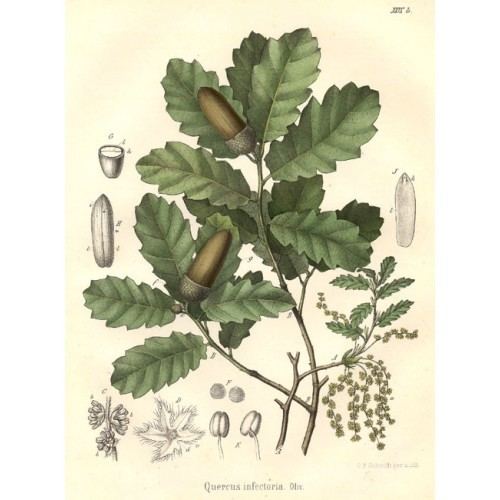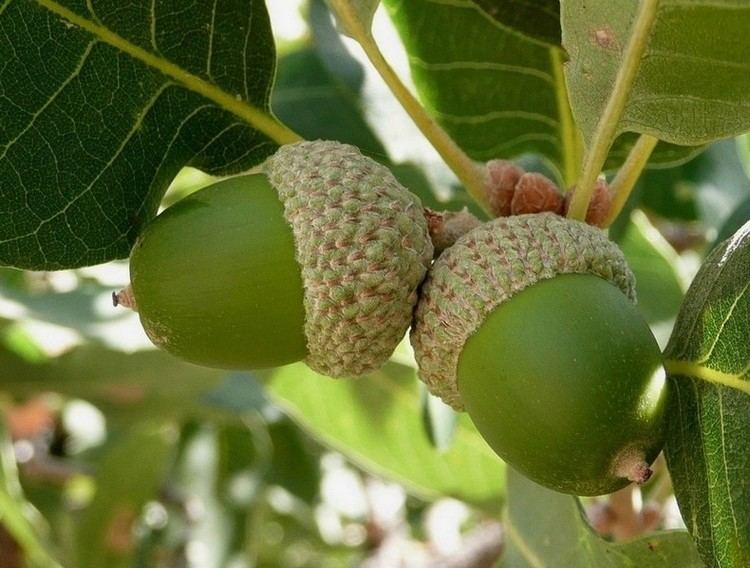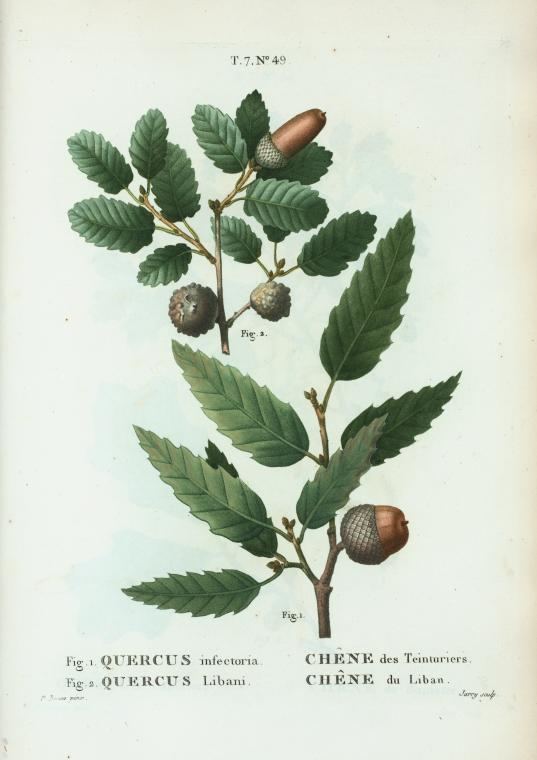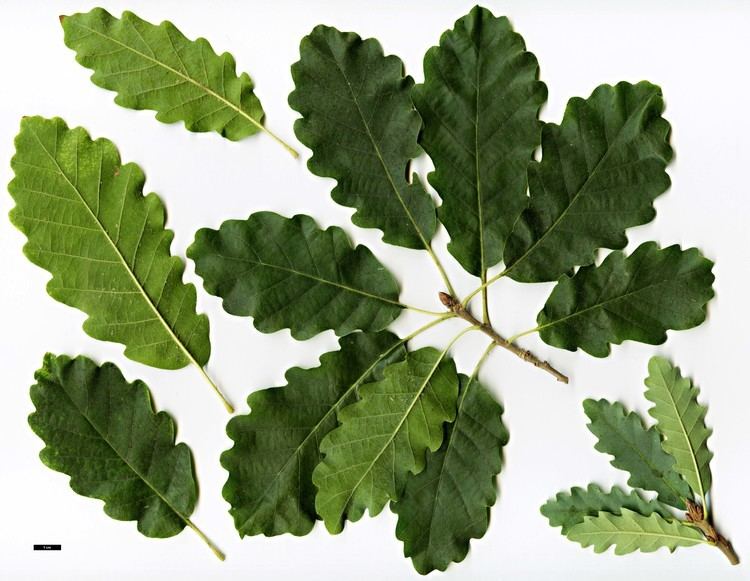Section Cerris Higher classification Cerris | Genus Quercus Scientific name Quercus infectoria Rank Species | |
 | ||
Similar Betel, Kacip fatimah, Oak, Quercus lusitanica, Longjack | ||
Quercus infectoria aleppo oak
Quercus infectoria (Aleppo oak) is a species of oak, bearing galls that have been traditionally used for centuries in Asia medicinally.
Contents
Description

Quercus infectoria or locally known as Manjakani in Malaysia is a small tree native of Greece and Asia Minor, with four to six feet in height. The stems are crooked, shrubby looking with smooth and bright-green leaves borne on short petioles of 1 to 1.5 inches long. The leaves are bluntly mucronate, rounded, smooth, unequal at the base and shiny on the upper side. Meanwhile,Quercus infectoria galls are corrugated and can be used as a thickener in stews or mixed with cereals for making bread.
Uses
The galls arise on young branches of this tree as a result of attacks by gall wasps.

Also known as Majuphal in Indian traditional medicine, manjakani has been used as dental powder and in the treatment of toothache and gingivitis.

The so-called "Aleppo tannin" is Tannic acid gained from Aleppo oak galls, which displays unique chemical properties essential in the preparation of gold sols (colloids) used as markers in Immunocytochemistry.
Nowadays, gallnut extracts are also widely used in pharmaceuticals, food and feed additives, dyes, inks, and metallurgy.
Pharmacology

The galls of Quercus infectoria have also been pharmacologically documented to possess astringent, antidiabetic, antitremorine, local anaesthetic, antiviral, antibacterial, antifungal, larvicidal and anti-inflammatory activities. The main constituents found in the galls of Quercus infectoria are tannin (50-70%) and small amount of free gallic acid and ellagic acid.

The wide range of pharmacological activities of this plant might support the efficacy of extract preparation of Quercus infectoria that are widely used in Malaysia for treating many kinds of health problems since many decades ago. The nutgalls have been pharmacologically documented on their antiamoebic, anticariogenic and anti-inflammatory activities, to treat skin infections and gastrointestinal disorders.
Constituents

The galls from Quercus infectoria contain the highest naturally occurring level of tannin, approx. 50–70%, syringic acid, β-sitosterol, amentoflavone, hexamethyl ether, isocryptomerin, methyl betulate, methyl oleanate and hexagalloyl glucose. They also contain 2-4% each of gallic and ellagic acid that are polymerized to make tannins. Tannins have been used for hundreds of years for medical purposes and are currently indispensable in dermatology and have been used for tanning of leather.

Tannins comprise a large group of natural products widely distributed in the plant kingdom. They have a great structural diversity, but are usually divided into two basic groups: the hydrolyzable type and the condensed type. Hydrolyzable tannins include the commonly occurring gallic and ellagic acid contained in the nutgalls.

Hydrolyzable tannins are present in many different plant species but are found in particularly high concentrations in nutgalls growing on Rhus semialata (Chinese and Korean gallotannins) and Quercus infectoria (Turkish and Chinese gallotannins), the seedpods of Caesalpinia spinosa (Tara tannins), and the fruits of Terminalia chebula. The gallic and ellagic acid hydrolyzable tannins react with proteins to produce typical tanning effects; medicinally, this is important to treat inflamed or ulcerated tissues. They also contribute to most of the astringent property of manjakani and are therefore great for vaginal tightening.
Although both types of tannin have been used to treat diseases in traditional medicine, the hydrolyzable tannins have long been considered official medicinal agents in Europe and North America. They have been included in many pharmacopoeias, in the older editions in particular, and are specifically referred to as tannic acid. These were recommended for treatment of inflammation and ulceration, including topical application for skin diseases and internal use for intestinal ulceration and diarrhea. Now, the condensed tannins also have important medicinal roles, such as stable and potent antioxidants. In China, tannin-containing substances, such as galls, pomegranate rinds, and terminalia fruits, are used in several medicinal preparations.
